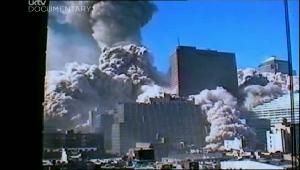Horizon
The Fall of the World Trade Center (2002x8)
:
The World Trade Center was built on revolutionary design principles. It turned conventional architectural and structural techniques on their head. Built from a thin web of steel, its design was efficient, cost-effective and would inspire a new wave in modern building techniques.
The result was two towers that were both lightweight and strong. When they were completed they were the tallest in the world. They were also milestones of architecture for another reason. The two towers were the first skyscrapers explicitly designed to withstand being hit by a jet plane.
Although they had considered an aircraft impact, the designers of the World Trade towers had not anticipated the effect of an aeroplane's fuel load. British-born survivor Paul Neal tells how he smelt jet fuel rushing through the lift shafts close to his desk. "I recognised it because I'm a private pilot. I recall smelling it and instantly dismissed it as being illogical because it didn't have any place in the World Trade Center."
Survivor, Bill Forney, recalls the instant that the 767 aircraft hit the North Tower one floor above where he was sitting. "The building started shaking. It lurched back and forth. It was the first time that I had truly thought that I might die. After a terrifying six to ten movements back and forth it was over and it was done."
The World Trade Center had ultra-lightweight floors, and used the latest fireproof 'drywall' to protect the stairwells and lift shafts. Much of this internal structure seems to have been vaporized when the planes crashed, exposing the underlying steel to the intense heat of multiple fires.
Brian Clark was one of the only four survivors from both towers to escape from above where the planes hit. He describess clambering over the shattered walls to break through a smoke-filled stairwell to get out. "Drywall had been blown off and was lying up against the stair railing." he says, "We had to shovel it aside." Another survivor, window cleaner Jan
